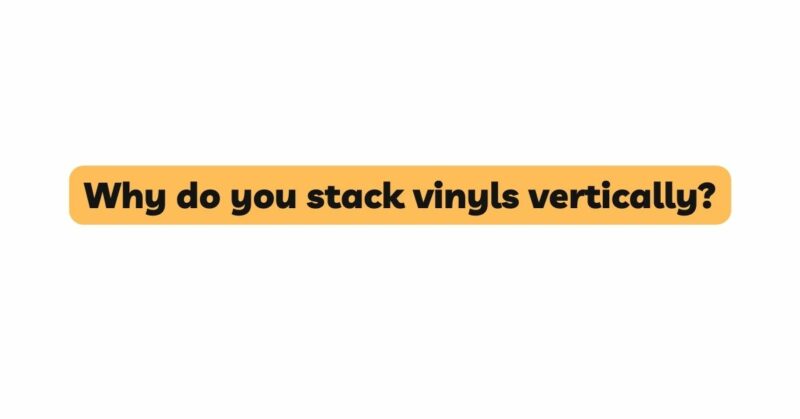As vinyl records continue to enjoy a resurgence in popularity, collectors and enthusiasts explore various methods for storing and displaying their cherished collections. One common practice that has stood the test of time is stacking vinyl records vertically. This choice, often seen in record stores and personal collections, raises questions about its advantages, considerations, and impact on the preservation of vinyl records. This article delves into the reasons behind vertically stacking vinyl records, exploring the historical context, practical benefits, and potential challenges associated with this storage method.
The Historical Evolution of Vertical Stacking
The practice of vertically stacking vinyl records has historical roots that trace back to the early days of record stores and music distribution. Record stores, seeking to optimize limited shelf space, adopted vertical stacking as a practical means of displaying a larger number of records while allowing easy access for customers. Over time, this method became synonymous with convenience, and collectors began adopting it in their personal collections.
Advantages of Vertical Stacking
- Optimal Space Utilization: One of the primary advantages of vertically stacking records is its efficient use of space. By aligning records upright, collectors can maximize storage capacity on shelves, making it possible to accommodate larger collections without requiring extensive shelving units.
- Easy Visibility: Storing records vertically allows for clear visibility of the album covers’ spines, making it simple to identify and locate specific records at a glance. This is particularly useful for collectors with extensive collections.
- Efficient Retrieval: Accessing records from vertically stacked arrangements is straightforward, involving minimal effort to slide records in and out of the shelf space.
- Reduced Warping Risk: Storing records upright can help reduce the risk of warping compared to horizontal stacking, as the weight of the record is evenly distributed along its edges rather than concentrated on its surface.
- Album Cover Protection: By minimizing contact between album covers, vertically stacked records can help prevent cover wear, creasing, and other forms of physical damage.
- Ease of Organization: Vertical stacking facilitates organization by genre, artist, or other categorizations, allowing collectors to create a visually pleasing and structured arrangement.
Considerations and Challenges
While vertical stacking offers several advantages, it’s important to acknowledge potential considerations and challenges:
- Warping Risk: While vertical stacking can reduce warping, it doesn’t entirely eliminate the risk. Records stored upright are still susceptible to warping if subjected to extreme temperature fluctuations or pressure.
- Spine Wear: Repeated sliding in and out of the shelf slot can lead to wear and damage to the album cover’s spine, which is a concern for collectors focused on preserving the overall condition of the cover.
- Potential Disorganization: Over time, if not organized properly, vertically stacked records can become disorderly and difficult to navigate, detracting from the intended benefits of easy access and organization.
- Aesthetic Appeal: Some collectors value the visual impact of album cover artwork and prefer alternative display methods that allow for a fuller view of the artwork.
Conclusion: A Balance Between Convenience and Preservation
The choice to stack vinyl records vertically is rooted in a combination of historical practices, practicality, and personal preferences. While this method offers efficient space utilization, easy access, and reduced warping risks, it’s essential to approach vertical stacking with a balanced perspective. Collectors should take steps to mitigate potential challenges, such as using proper inner sleeves to protect albums, implementing thoughtful organization strategies, and regularly inspecting records for signs of wear or warping.
Ultimately, the decision to stack vinyl records vertically should align with the collector’s goals, the size of the collection, and the desire to strike a balance between convenience and preservation. With thoughtful consideration and informed practices, collectors can enjoy the benefits of vertical stacking while safeguarding the visual and auditory integrity of their vinyl records for years to come.


